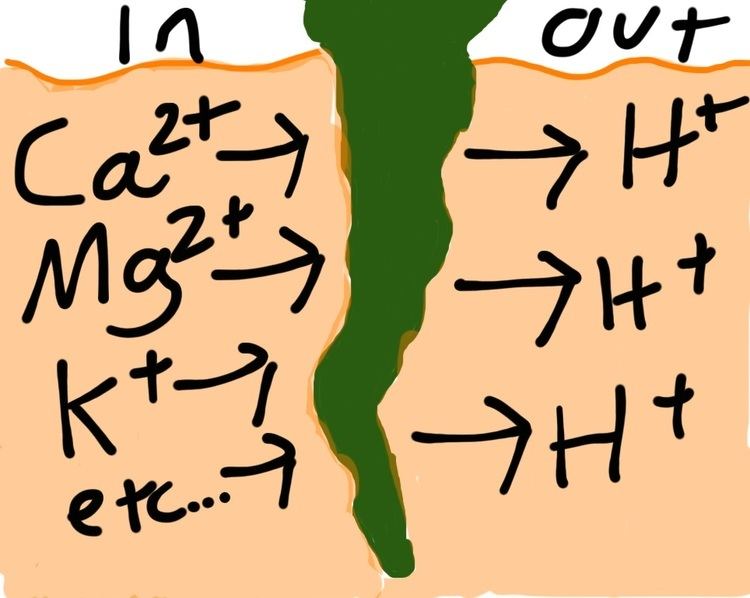 | ||
Rhizoliths are root systems that have been encased in mineral matter. Rhizoliths are created through processes of chemical weathering, decomposition, reprecipitation and cementation. Rhizoliths are formed through the transport of dissolved Ca2+ and HCO3− enhancing the CaCO3 precipitation in a diameter of up to several centimeters around the roots. This is possible on calcareous sediments, where high amounts of Ca2+ in the rhizosphere can lead to the formation of encrustations around roots termed rhizoliths.
Contents
Root Systems vs Burrow systems
Rhizoliths, like animal burrows are commonly circular in cross-section and cylindrical in shape. They can vary in length from a few centimeters to several meters, the longest recorded in was 4 meters long. Burrows on the other hand, are generally less than a meter long but much larger burrows are known. Some have recorded vertical dwelling burrows up to 9 m long, but only 0.5 cm in diameter. The diameters of rhizoliths range from 0.1 mm to about 20 cm.
Rhizolith vs petrifaction
Petrifaction is separated from Rhizocretion by the way they are created. Petrifaction is defined as 'a process of fossilization whereby organic matter is converted into a stony substance by the infiltration of water containing dissolved inorganic matter, such as calcium carbonate and silica, which replaces the original organic material, sometimes retaining the original structure'. Thus root petrifaction is a process which involves replacement, impregnation, encrustation and void-filling of organic matter by mineral matter without total loss of root anatomical features. Whereas rhizocretions which include rhizoliths, are created by the pedodiagenetic accumulation of mineral matter around roots. Accumulation, usually accompanied by cementation, may occur during life or death of plant roots.
Plants play a role in biological weathering. The plant roots accelerate weathering of rocks by exchanging H+ ions from their roots for Ca2+, Mg2+, K+, etc.,. ions in the rocks. Some roots take up more anions than cations. Such roots maintain electrical neutrality by passing out HCO3− ions rather than H+ ions. In so doing, the pH of the surrounding soil is raised, rather than lowered. This may trigger precipitation of calcium carbonate around roots, this leading to the formation of rhizocretions. Some other possible ways of forming root sheaths one or more of five biochemical ways, depending upon, (1) the presence of organic acids exude by living plant roots; (2) symbiotic relations between roots and soil bacteria; (3) symbiotic relations between roots and certain soil fungi; (4) the presence of some blue green soil algae which have calcium carbonate precipitating bacteria housed in their slime sheaths; (5) calcium exclusion properties of calcium carbonate outside the root. Even though rhizocreation can be formed from any one or combination of these processes, the 1st is the favored method. There has been evidence and speculation that root calcification occurs in a period leading up to or during periods of rather dry climatic conditions and or/ moisture regimes with strong seasonality.
